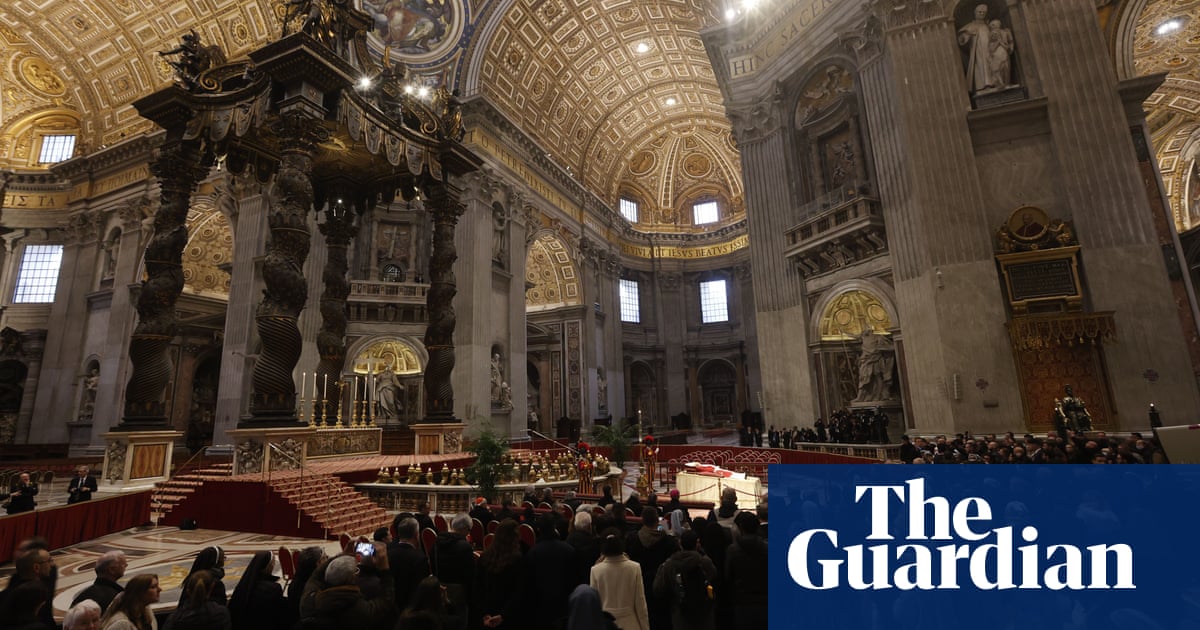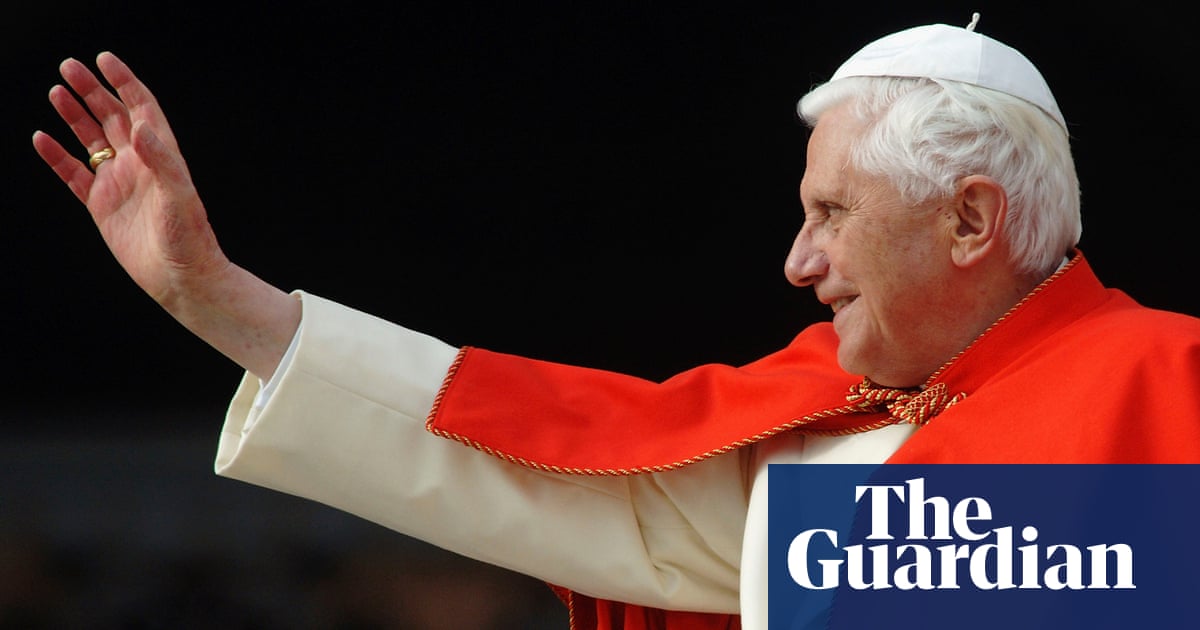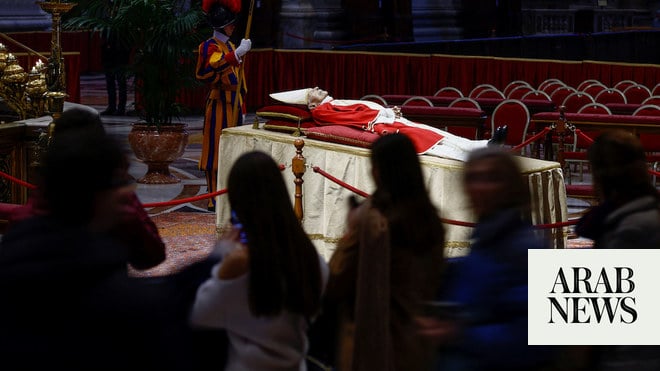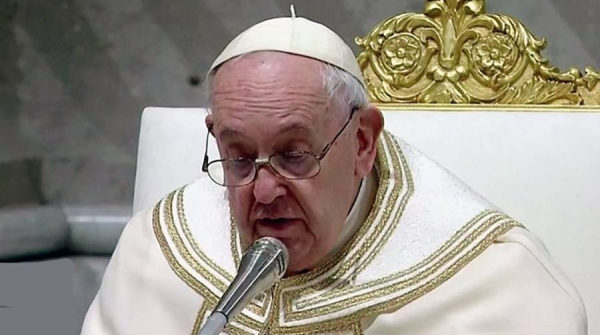
Thousands of Catholics have begun queueing at the Vatican to pay their respects to the former pope Benedict XVI, with some hoping he would be canonised as a saint.
Benedict died on Saturday, aged 95, and his body was transferred from a Vatican monastery to St Peter’s Basilica on Monday at 7am, where it will lie in state for three days before his funeral on Thursday.
Rome officials anticipate that at least 35,000 people a day will descend on the Vatican to pay their respects to Benedict, who almost a decade ago became the first pope to resign in 600 years, with many travelling from overseas.
Many of those who joined the queue early on Monday to see Benedict’s body, which has been dressed in red papal mourning robes, were priests and nuns who waited alongside Catholics devotees or those who were already visiting Rome and wanted to pay tribute.
“The queue is moving pretty steadily, and there is a calm and serene atmosphere,” said Christopher White, the Vatican correspondent for the National Catholic Reporter. “Those who were queuing for hours before things opened up are the type of people who really had a strong devotion to him. For a certain type of Catholic, Benedict had quite a draw. He had a reputation as an intellect, scholar and theologian, which resonated with the more theologically minded conservative Catholic. Their immediate pivot is that he is one of the greatest minds the church has ever had, and they have every confidence that he will one day be a saint.”
Among the first people to enter St Peter’s Basilica, where Benedict’s body has been laid out on a casket covered with a gold cloth in front of the altar, were the Italian president, Sergio Mattarella, and the prime minister, Giorgia Meloni.
Benedict’s successor, Pope Francis, will lead the funeral mass on Thursday before the body is buried in the tombs beneath the basilica.
Born in Germany, Benedict led the Catholic church for eight years before resigning in 2013, citing a decline in his health. He chose to be called Pope Emeritus Benedict XVI after his abdication, instead of reverting to Joseph Ratzinger, and continued to live within the walls of the Vatican and wear a white cassock.
Despite being in the background, Benedict came forward on a variety of issues over the past decade, often clashing with the views of the more liberal-minded Francis. The unusual relationship inspired the film The Two Popes.
In one of his most controversial essays, published in 2019, Benedict blamed the church’s sexual abuse scandals on the sexual revolution of the 1960s and “homosexual cliques” among priests. His opinion came two months after an unprecedented Vatican summit on tackling clerical sexual abuse, and sharply contrasted with that of Pope Francis, who blamed the scandals on a clerical culture that elevates priests above the laity.
Meanwhile, the results of a German investigation published in January last year said Benedict had failed to act against four priests accused of child sexual abuse during his time as archbishop of Munich.
Peter Seewald, a German journalist who wrote four books based on a series of interviews with Benedict, said that although the former pope had many enemies, he also had many followers.
“This is why we are seeing a lot of people in the queue,” said Seewald. “It is often overlooked that he was the most-read and most well-known theologian of modern times. His books sold by the millions, and for many Christians he was a lighthouse in modern times.”
However, as tributes towards Benedict poured in from around the world over weekend, the Catholic Women’s Ordination (CWO) issued a strong statement saying that Benedict’s death “would be a trigger” to all those who had suffered clerical abuse as well as to women whose attempts to be ordained as priests were blocked by him and the clergy who supported his views.
“Seeing images of people queuing, filing past the body and crying makes me feel sick,” said Pat Brown, a spokesperson for CWO. “For the survivors of clerical abuse, this must be bringing everything back for them – this man could have done something, and he didn’t do anything. It’s also tough for the women who can’t test their vocation in the priesthood. So much suffering has been caused by this church and yet it still has the power … it’s almost like brainwashing, people are totally blinkered, they just see this hierarchical figure as being infallible.”
Any criticism among those who queued on Monday appeared to instead be directed at Francis.
“One person said the last 10 years have been a disaster,” said White. “Another praised Benedict, saying he had been a saint for remaining so quiet in these troubled times.”












